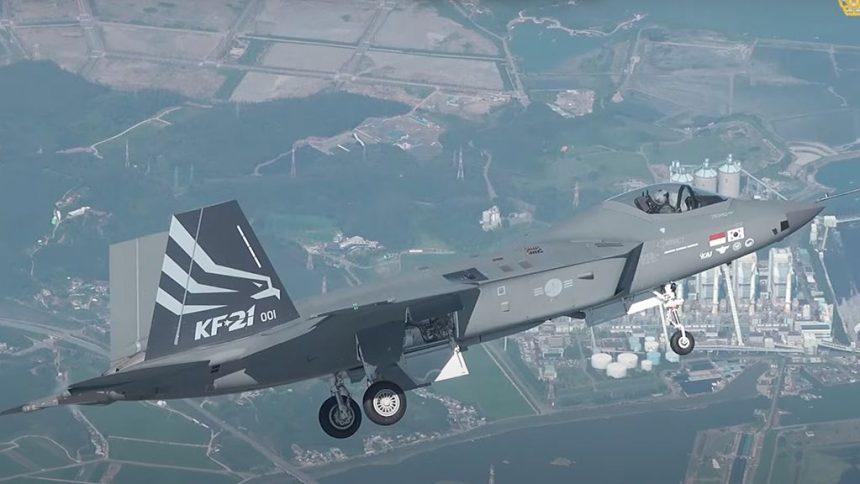Here’s a really interesting footage of South Korea’s KF-21 Boramae during its recent first flight.
The first prototype of the KF-21 Boramae (Korean for “Hawk”), flew for the first time from Sacheon airport, South Korea, on Jul. 19, 2022. The next-generation fighter developed by KAI (Korea Aerospace Industries) serial 001, took off at 3:40PM LT and remained airborne for 33 minutes before successfully landing.
As already explained in our first coverage of the maiden flight, some interesting details could be spotted in the images released by DAPA, the state Defense Acquisition Program Administration: first of all, the 4.5-generation fighter sported the Indonesian flag along with the Korean one on the nose section under the cockpit; second, the prototype carried four inert Meteors under the fuselage. While it’s not a secret that the 4.5-generation fighter will be equipped with air-to-air missiles, including the MBDA Meteor, it’s quite unusual to see weapons carried by a prototype on its first flight.
Anyway, a new video, filmed by a chase T-50 jet trainer, was just released by the ROKAF (Republic of Korea Air Force). The HD footage provides a closer look at the KF-21, allowing us to catch a few more details.
The video shows the Boramae flying at medium altitude with the open landing gear bays. We can see several interesting details of the new aircraft including the dorsal aerial refueling receptacle markings that show where the flying boom used for AAR (Air-to-Air Refueling) will need to be plugged to refuel the jet midair.
Noteworthy, we can also see that the KF-21 wintips generates the same vortices (similar to contrails) we can see on the F-35.
The F-35’s flaperon and wingtip vortices have long been subject of discussion here at The Aviationist. GAO claimed that these could affect the aircraft’s stealth performance; others suggest these visible “tubes of circulating air which are left behind the aircraft’s wing as it generates lift” may make the aircraft more easily picked up visually by an enemy pilot in a WVR (Within Visual Range) engagement even though some pilots have explained that they are not a factor because if you are close enough to see the F-35’s vortices, you are probably close enough to see the jet. True, although some images taken from the ground and posted online in the past, of F-35s trailing a tanker, indeed seemed to confirm that, under certain conditions, those vortices may highlight the presence of the jet from several miles away.
Anyway, the visible wingtip vortices are probably even less relevant to the KF-21 than they are to the F-35, considered that the South Korea’s homegrown type is not a LO (Low Observable) platform “by design”: KAI has given up on several stealth attributes of the type that is considered a capability gap filler between the ROKAF F-35 and F-16. For this reason its weapons will be carried on external hardpoints and pylons and not internally, as other radar-evading assets do to reduce the aircraft’s RCS (Radar Cross Section).









